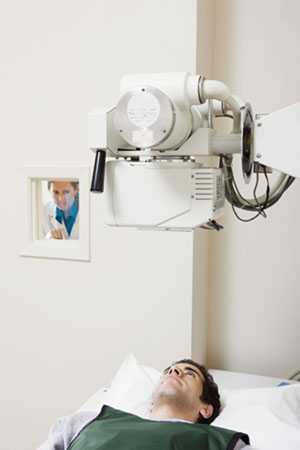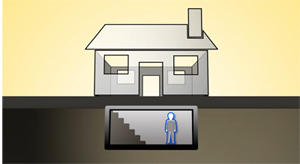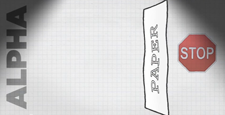ALARA - As Low As Reasonably Achievable
The guiding principle of radiation safety is “ALARA”. ALARA stands for “as low as reasonably achievable”. This principle means that even if it is a small dose, if receiving that dose has no direct benefit, you should try to avoid it.
To do this, you can use three basic protective measures in radiation safety: time, distance, and shielding.
Time:

“Time” simply refers to the amount of time you spend near a radioactive source. Minimize your time near a radioactive source to only what it takes to get the job done. If you are in an area where radiation levels are elevated, complete your work as quickly as possible, and then leave the area. There is no reason to spend more time around it than necessary.
For an example of minimizing time, click here
Distance:

“Distance” refers to how close you are to a radioactive source. Maximize your distance from a radioactive source as much as you can. This is an easy way to protect yourself because distance and dose are inversely related. If you increase your distance, you decrease your dose.
For an example of maximizing distance, click here
Shielding:

To shield yourself from a radiation source, you need to put something between you and the radiation source. The most effective shielding will depend on what kind of radiation the source is emitting. Some radionuclides emit more than one kind of radiation.
Time, Distance, and Shielding: Three Principles That Work Together

You can see how these principles work together when you have an x-ray at your doctor’s office or clinic. The radiation technician goes behind a barrier while taking the x-ray image to protect them from the repeated daily exposure to radiation.
In the case of a radiation emergency, you can use time, distance, and shielding to protect yourself and your family.
Time
If a radiation emergency happens, one of the best things you can do is get inside a stable building as quickly as possible.

Distance
How long you need to stay inside will depend on the incident and the amount of damage to critical infrastructure, like roads and bridges. Once roads and bridges are cleared, emergency officials may instruct you to leave the area.
Shielding
If you are in a multistory building, move to the center floors.
If you are in a single story building, stay in the center away from windows, doors, and exterior walls.
You can also take shelter in a basement.

Using Personal Protective Equipment
If you are a first responder or radiation worker, you have personal protective equipment you can use to minimize your exposure.
- Respirators will help protect from inhalation hazards.
- Protective clothing helps keep radioactive material off of skin and hair.
- Alarming dosimeters help manage stay time and track your accumulated doses in an area with elevated radiation levels.
If radioactive material gets on to skin, clothing, or hair, it is important to get it off as quickly as possible.
For information on decontaminating yourself, click here
Anybody who works with radiation should work with their safety officers and radiation safety professionals to determine what personal protective equipment, or PPE, and instrumentation they need to stay safe on the job.
ALARA Examples
Imagine sitting very close to a fireplace. You can feel the heat and may even be uncomfortable.

If you go to the other side of the room, you would be more comfortable. So as you move away, the intensity decreases.

Alpha particles can be shielded with something as thin as a sheet of paper, or our outer layer of dead skin cells.

Beta particles can be shielded effectively with a few inches of plastic, or a layer of clothing.

Gamma rays can be shielded effectively by adding a few inches of lead or other dense substance between you and the source of radiation.

- Page last reviewed: December 7, 2015
- Page last updated: December 7, 2015
- Content source:


 ShareCompartir
ShareCompartir


